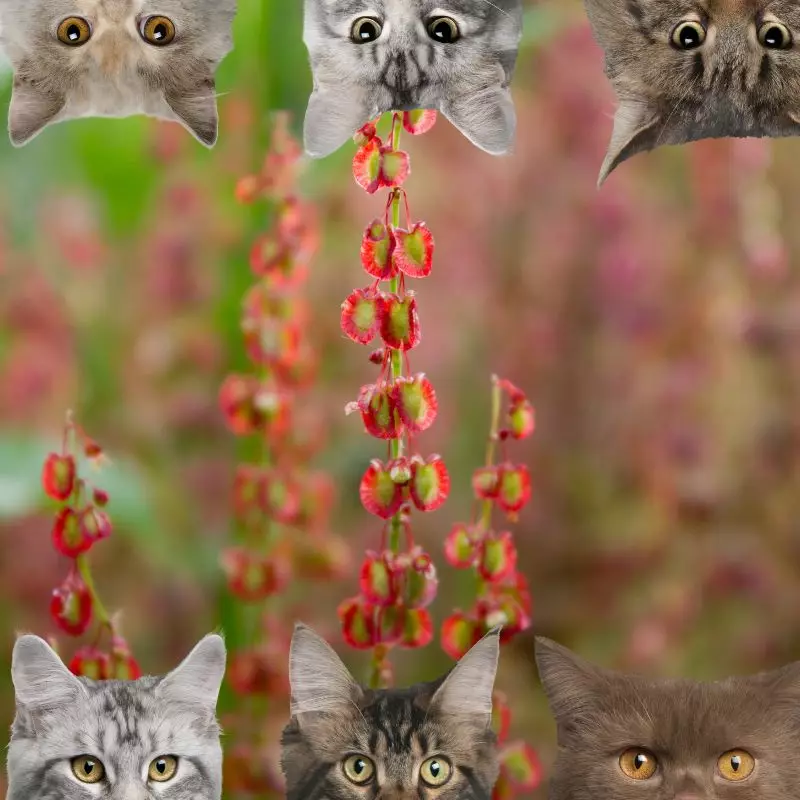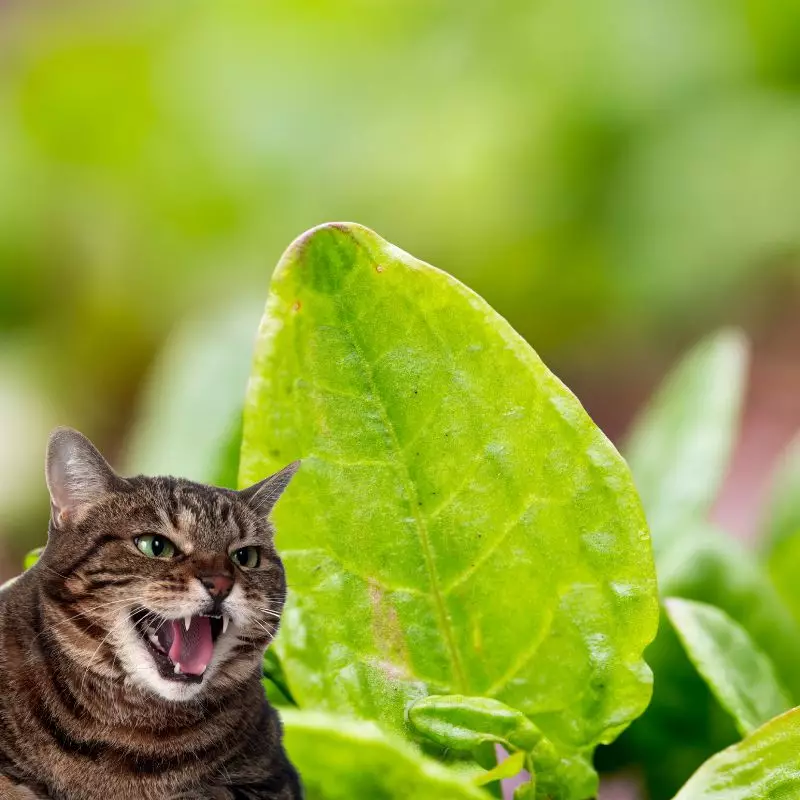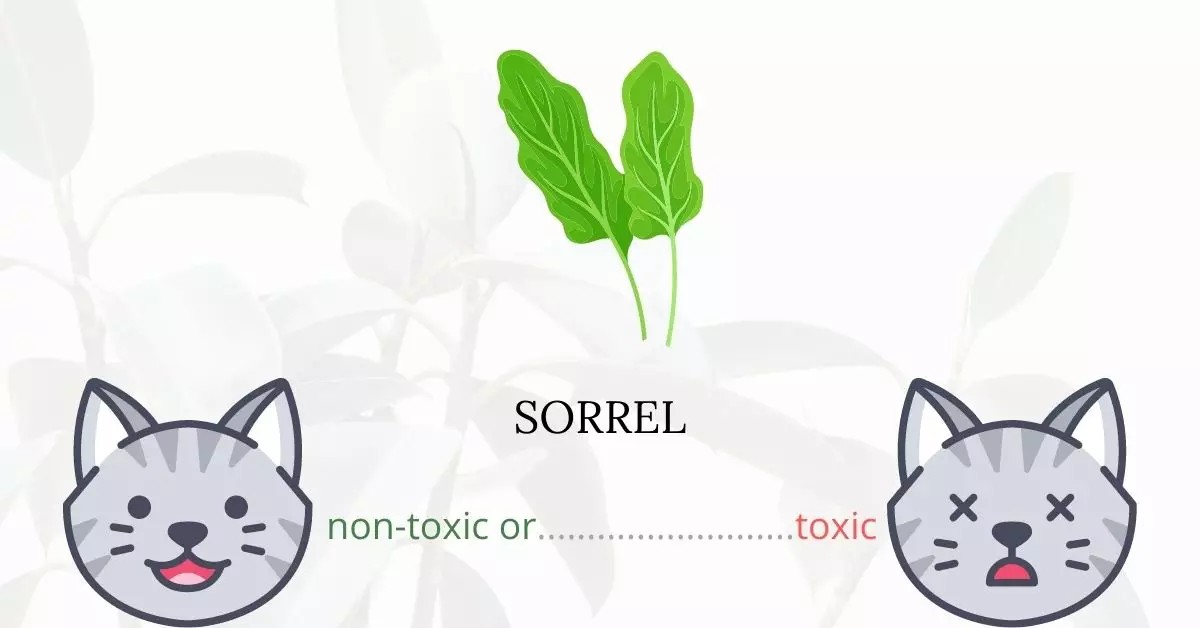Yes, sorrel is toxic to cats. The primary toxic component of the sorrel plant is the needle-like calcium oxalate crystals. When a cat consumes parts of the sorrel plant, such as its stem, leaves, or roots, these crystals are released upon chewing, potentially lodging in the cat’s throat and digestive tract for up to two weeks following ingestion.
This article has been crafted in collaboration with a team of experienced DVMs (doctors of veterinary medicine). Their invaluable insights and expertise have guided our understanding of the potential risks associated with various plants, with a particular emphasis on sorrel and its effects on felines. Additionally, to ensure the utmost accuracy and credibility, we have also referenced high-authority websites such as ASPCA and PetMD in our comprehensive research on the topic.
Clinical Signs of Sorrel Poisoning in Cats

When cats come into contact with or ingest the sorrel plant, they might exhibit a series of clinical signs owing to the release of needle-like calcium oxalate crystals. Here’s a detailed look at the manifestations of sorrel poisoning in cats and the underlying reasons for each:
- Gastrointestinal Upset: Consumption of sorrel can lead to nausea, vomiting, and diarrhea due to irritation and inflammation of the gastrointestinal tract, caused by the calcium oxalate crystals.
- Depression: The discomfort and pain arising from ingestion can cause cats to display signs of depression and lethargy.
- Rapid and Labored Breathing: The presence of calcium oxalate crystals can compromise respiratory function, leading to rapid and strained breathing.
- Dark Colored Mucous Membranes: Reduced oxygen supply due to respiratory distress can result in the darkening of mucous membranes.
- Weakness: Due to the overall distress and potential dehydration from gastrointestinal upset, affected cats may exhibit signs of weakness.
- Muscle Fasciculations: The disruption of calcium homeostasis due to the crystals can induce muscle twitching or fasciculations.
- Seizures: Extreme cases of sorrel poisoning can lead to seizures due to the impact on neurological function and electrolyte imbalances.
- Hypocalcemia: The calcium-binding property of oxalate can lead to a decline in blood calcium levels, known as hypocalcemia.
- Heart Arrhythmias: The imbalance in calcium levels can disrupt the regular rhythmic contractions of the heart, inducing arrhythmias.
- Renal Failure: The accumulation of calcium oxalate crystals in the kidneys can obstruct normal kidney function, possibly leading to renal failure.
Recognizing the similarity in symptoms between sorrel poisoning and other prevalent health disorders or plant poisonings, it is paramount to seek immediate veterinary attention for an accurate diagnosis and prompt, appropriate treatment. Your veterinarian may need to perform a diagnostic differential to ascertain the precise cause of the symptoms observed.
First Aid and Treatment of Sorrel Poisoning in Cats

The key to a good prognosis is to start therapy before the renal organs shut down. The veterinarian may prescribe vomiting medicine or give the feline an activated charcoal solution to bond with the deadly plant component, which will then be passed from the body in fecal form.
Intravenous fluids may be given to the cat to help restore the feline’s hydration level particularly if he has been vomiting continuously. IV fluids will also help in flushing out the toxins from the cat’s body.
Recovery from Sorrel Poisoning in Cats

The prognosis of sorrel plant poisoning in cats is determined by how promptly veterinary medical assistance is sought. If the cat was taken to a veterinarian right away and treated before the seizures began, the animal’s prognosis is often favorable.
Prevention of Sorrel Poisoning in Cats
Cat owners should avoid growing sorrel in their yards. If it is known to be growing in your area, it is best to keep your cat indoors. Utilize cat houses and playpens to keep your cat entertained and occupied indoors. This will limit the possibility of cats wandering away and encountering toxic plants outside.
If you love plants but have cats at home, check out these lists:





